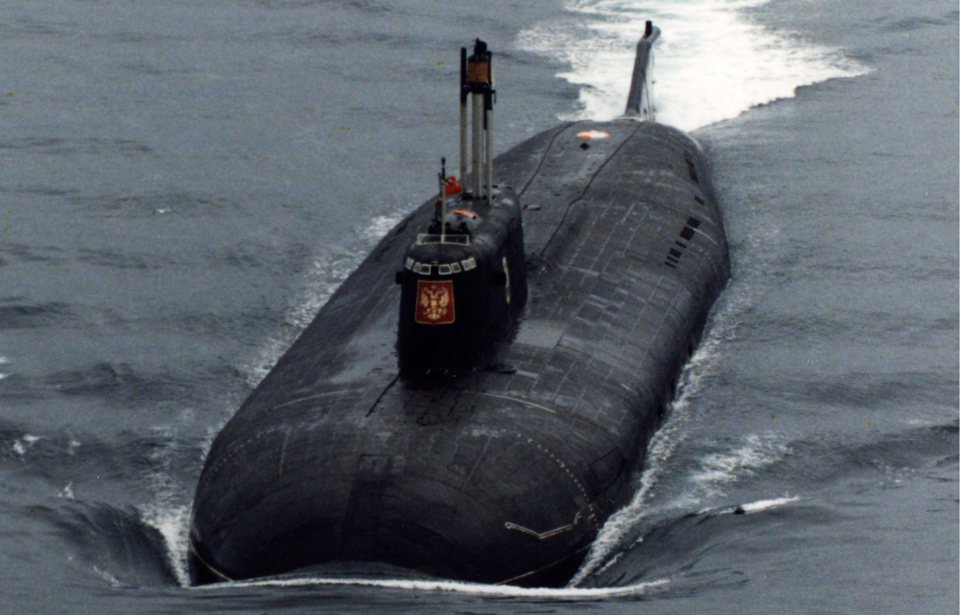K-141 Kursk was an Oscar II-class nuclear-powered cruise missile submarine operated by the Russian Navy. Commissioned in December 1994, she represented the peak of the country’s nuclear vessel technology, and was the second-largest cruise missile submersible ever constructed. In August 2000, while taking part in a major Russian naval exercise, Kursk sank in a disaster that resulted in the deaths of all 118 of the submarine’s crewmen.
Kursk was a submarine of mythical standing
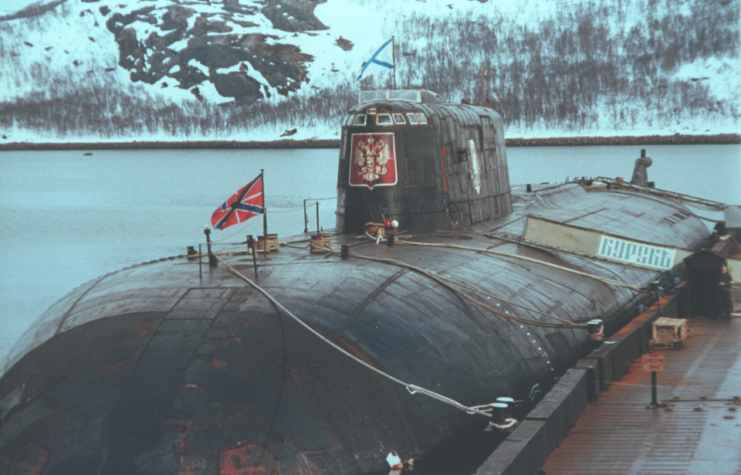
On August 12, 2000, K-141 Kursk was transiting the Barents Sea as part of the Summer-X naval exercise. It was the first major Russian training mission in more than a decade, and the first since the collapse of the Soviet Union. The vessel was one of just three submarines and 30 other warships participating in the exercise.
Kursk had gained quite a reputation since being commissioned; her crew were considered the best in the Northern Fleet. The submarine had also gained a mythical following, similar to the RMS Titanic, in that Kursk was believed to be unsinkable and capable of withstanding direct hits from torpedoes.
This was due to the steel plating that surrounded the submarine. Kursk‘s outer hull was built using 8.5 mm steel plating that had been covered with 800 mm of rubber. The inner pressure hull was also constructed with 50 mm steeling plating.
Kursk submarine disaster
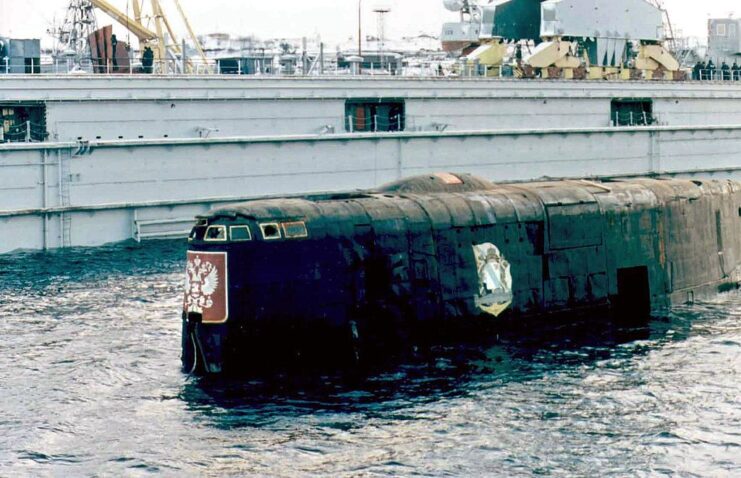
At 8:51 AM, Kursk requested to perform a training torpedo launch, with her crew loading the first dummy Type 65 torpedo at around 11: 29 AM. Around that time, seismic detectors recorded a seismic event that reached 1.5 on the Richter scale.
At 11:31 AM, just two minutes after the first, a second event was recorded that measured 4.2 on the Richter scale – 250 times larger than the first. This second event was detected as far away as Alaska, and was equivalent to the detonation of between two and three tons of TNT.
Following the first explosion, Kursk had traveled 1,300 feet. The second sent the sub to the sea floor, at a depth of about 354 feet.
Northern Fleet’s slow response
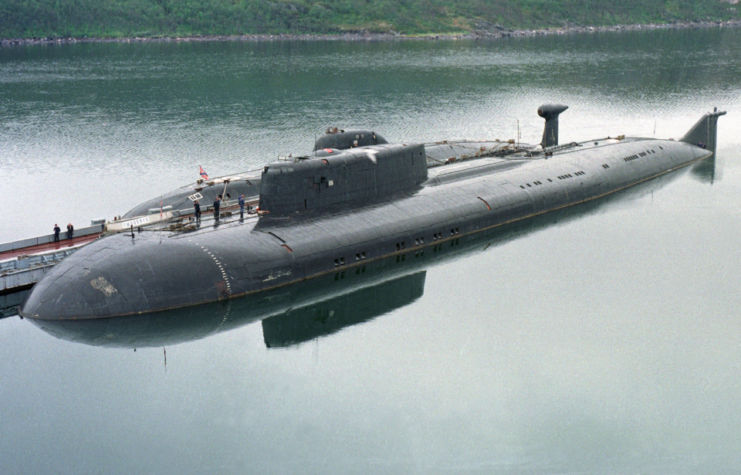
The Russian response to the Kursk submarine disaster was incredibly slow.
The Delfin-class ballistic missile submarine K-18 Karelia detected the explosion, but did nothing, as her crew thought it was part of the exercise. The battlecruiser Pyotr Velikiy also felt the explosion. Her crew did report it, but their calls were ignored by fleet headquarters.
It wasn’t until early afternoon that Fleet Commander Adm. Vyacheslav Alekseyevich Popov began to wonder where Kursk was. A helicopter was dispatched over the area where the submarine was supposed to be, but found nothing. Popov then ordered search and rescue forces to stand by.
At 5:00 PM, an Ilyushin Il-38 was ordered to search for Kursk, but didn’t turn anything up. After six hours, the Northern Fleet commander attempted to call the submarine for the first time. At 10:30 PM, an emergency was declared, leading Summer-X to halt all exercises. Between 15 and 22 ships began searching for Kursk.
Informing the Kremlin
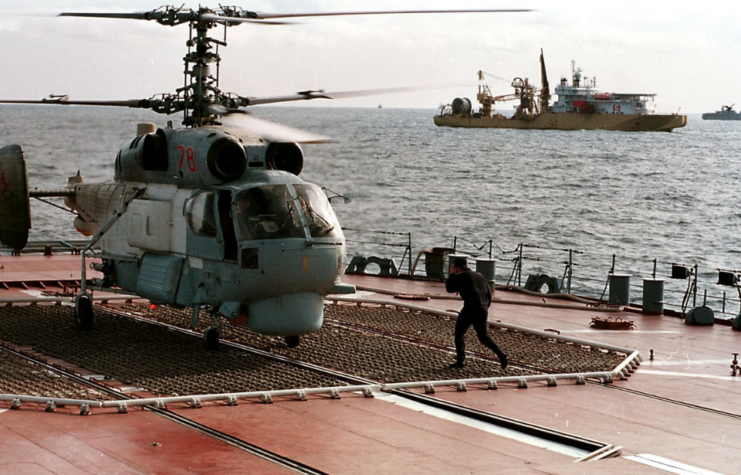
After Kursk had been missing for 12 hours, Popov informed the Kremlin of what had happened. President Vladimir Putin wasn’t notified, however, until 7:00 AM the next morning. The Russians also immediately denied the whole affair. When Popov spoke to reporters about Summer-X, he called the naval exercise a success and spoke highly of those involved.
Before the Kremlin had been informed, US National Security Adviser Sandy Berger and Defense Secretary William Cohen were told by intelligence sources about the Kursk submarine disaster. The United States, along with Britain, France, Germany, Italy, Israel and Norway, all offered to help in the rescue. However, the Russian government turned down the offers, saying a rescue was already underway.
The initial Russian efforts failed to locate Kursk. At 6:50 AM on August 14, 2000, the deep-submergence rescue vehicle AS-34 located the submarine, but wasn’t able to attach. On top of this, it was beginning to run low on battery power.
Bringing in international assistance
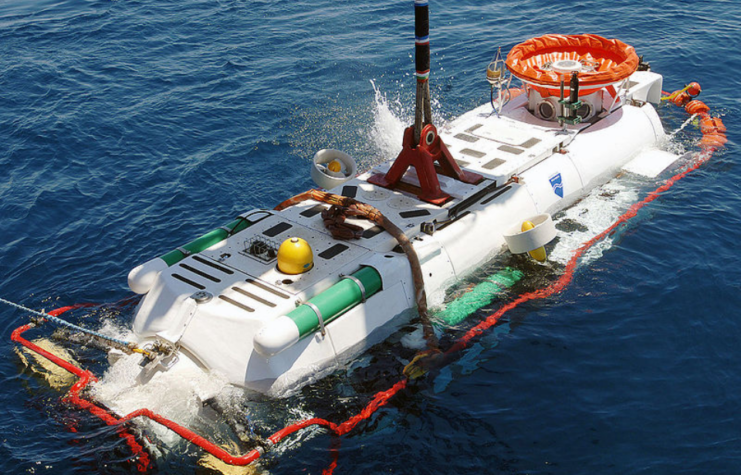
Russian attempts to rescue Kursk‘s crew continued with no success. Five days after the submarine sank, Putin accepted British and Norwegian assistance, with six diver teams, the Norwegian ship Normand Pioneer and the Royal Navy manned rescue vehicle LR5 arrived on-scene.
Norwegian divers, despite constraints imposed by Russian officials, as well as misleading information, gained access to Kursk, but there was an issue. The Russians wouldn’t allow anyone into the submarine, other than their own personnel. On August 21, 2000, Russian divers entered Kursk for the first time. They found that the entire crew had died, and that, despite what officials had said, they’d been alive during the whole ordeal.
Putin declared August 23 a day of mourning, and he posthumously awarded Kursk’s commander the title of Hero of Russia and the other crewmen the Order of Courage.
An official investigation concluded that, when the crew loaded the dummy torpedo into the tube, a faulty well caused a leak of high-test peroxide, which ignited and caused the first explosion, and subsequently triggered the second. A flash fire followed, consuming the available oxygen within Kursk, killing her remaining crew.
Salvaging the Kursk submarine following the disaster
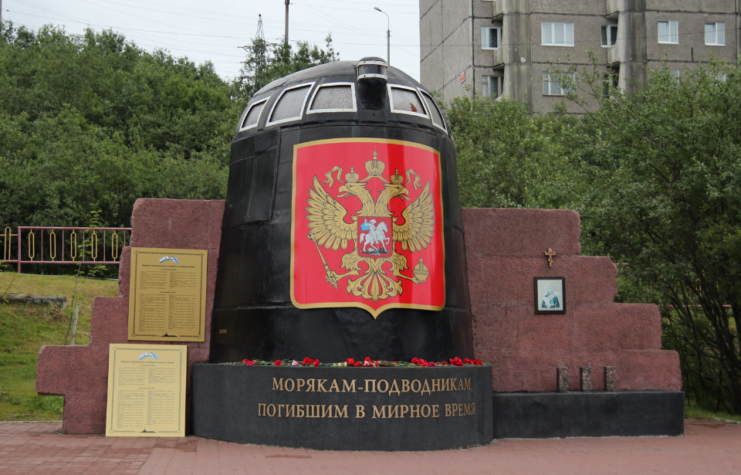
The Russian government committed to raising Kursk, along with the crew’s remains, in a $65 million salvage operation. Dutch marine salvage companies, Smit International and Mammoet, were contracted to raise the submarine from the sea floor in May 2001. Over the course of three months, custom-made equipment was produced and taken to the Barents Sea, with Kursk being raised that August, along with the remains of 115 crewmen. Three had been retrieved by divers a year prior.
The hull was taken to a shipyard and dismantled.
Are you a fan of all things ships and submarines? If so, subscribe to our Daily Warships newsletter!
A top-secret investigation into the incident and the Russian rescue mission revealed “stunning breaches of discipline, shoddy, obsolete and poorly maintained equipment,” as well as “negligence, incompetence, and mismanagement.”
